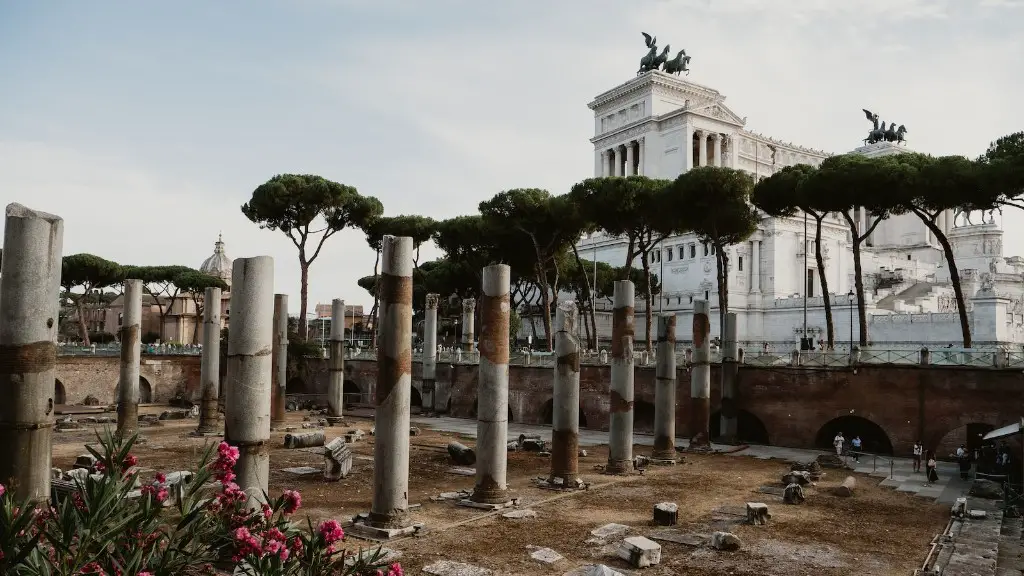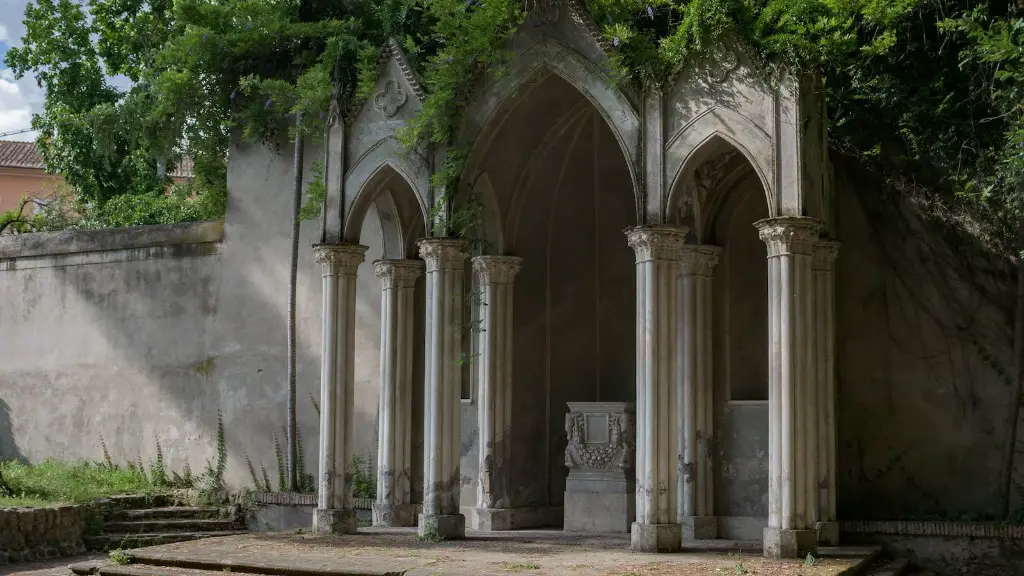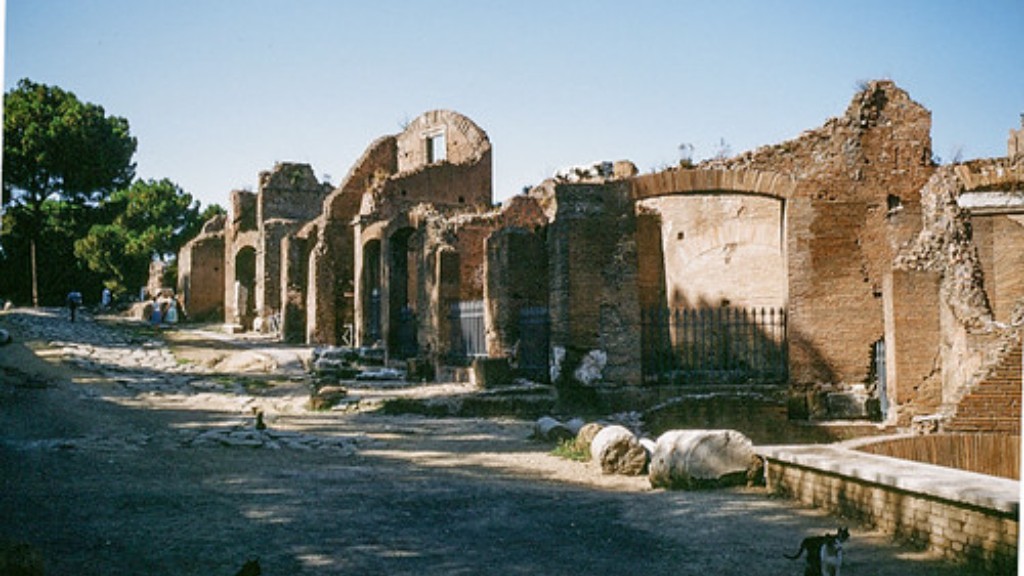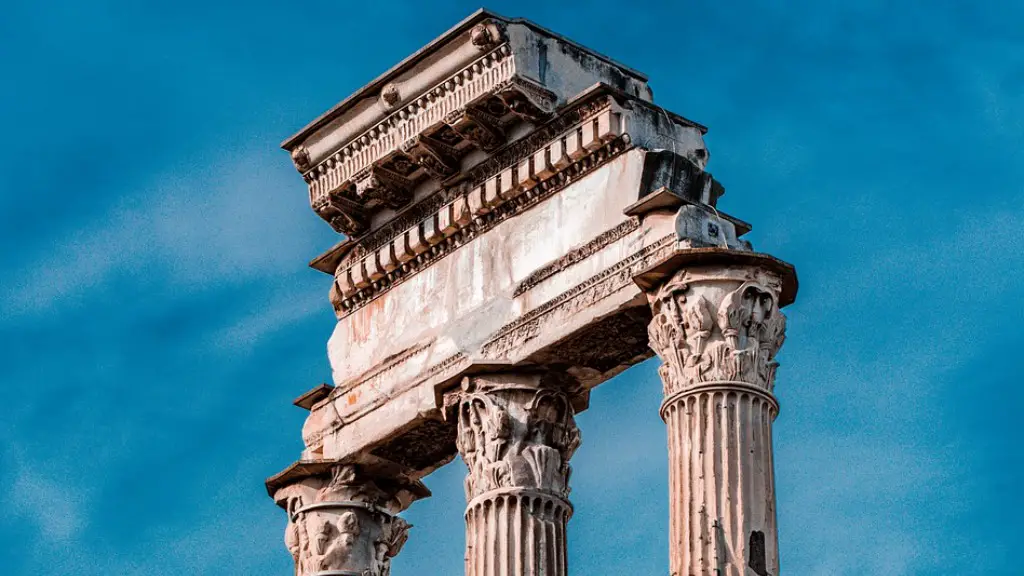The government of ancient Rome began from a small monarchy, through a republic, and then into an empire. However, contrary to modern democracies, the government of ancient Rome was based on necessity and order rather than tradition and freedom. During various eras of its existence, Rome’s government went through many changes and went through different forms of governance.
The Roman monarchy came to an end in 510BC with the overthrow of Tarquin the Proud, the seventh and last of the kings of Rome. In its place, the Roman Republic was formed, a government that emphasized individual rights and representative government. During the Roman Republic period, Rome had a senate, an assembly of men, who elected two consuls each year to lead the government. These consuls appointed other officials to make up the Roman magistrates, who served as the executive branch of the government. The magistrates had the power to carry out laws, raise taxes, command the army, and make decisions for the state.
As the Roman Republic grew and expanded, it began to face internal corruption, which led to its downfall. In 43BC, Julius Caesar, a former Roman military and political leader, took absolute control of the government in what is now known as the Roman Empire. Caesar formed the Roman Empire by appointing himself as its first Emperor and restructured the way in which Rome was governed.
Under the Roman Empire, the new government focused on a system of imperial rule, where the emperor was the only source of power and influence. The emperor had absolute power over all facets of government, including the military, religion, and the Senate. Under the Roman Empire, the emperor was able to levy taxes, enforce laws, and maintain a strong military force to protect the Roman Empire’s interests.
The Roman Empire continued to grow and expand until 337AD, when the Eastern Roman or Byzantine Empire and the Western Roman Empire split in two. After the split, the power of the Roman government shifted to Constantinople, the capital of the Eastern Roman Empire. While Constantinople had the sole power to make laws and government decisions, the city was not able to maintain this power for long and eventually fell to the Turks in 1453AD. The Roman government was then officially ended.
Taxes and Currency
Taxes and currency were important aspects of the Roman government, and these were used to both strengthen and expand the empire. Taxes were imposed on citizens of Rome, and these were collected every year. The taxes were collected from the citizens and from conquered provinces. This allowed the Roman government to fund its military campaigns, build massive public works projects, and purchase goods from other provinces. Furthermore, the Roman government also had its own currency, the ‘denarius’, which was used to pay taxes, purchase goods, and pay government officials. This currency was used extensively throughout the Roman Empire and was, at times, accepted as legal tender beyond the borders of Rome.
Roman Law
Roman law was another important aspect of the Roman government, as it set out clear rules and regulations for how citizens were to behave and how government officials were to interact with the people. Roman laws were based on objective standards, instead of the subjective opinions held by political rulers. Roman law also defined property rights, status of citizens, and rights and privileges of people within society. This made the government more efficient and also allowed it to settle disputes without resorting to violence, protecting citizens and their property.
Military
The military was the final element of the Roman government, and it was used both to protect the interests of the state, as well as to expand the power and influence of Rome. The Roman military was one of the strongest and most advanced in the world at the time, and it was used by the Roman government to both protect Rome from outside forces and to expand the empire by conquering other lands and peoples. The Roman military was divided into two branches: the legions and auxiliaries. The legions were the army, which were made up of professional soldiers, and the auxiliaries were made up of of non-professional soldiers.
Cultural Influence
The Roman government had a great cultural influence on the world. It established laws, language, customs, and religion that were to endure for centuries. Roman law became the basis for the legal systems of many modern countries today, and the Roman language was the primary language of the Roman Empire and of the modern Western world. The majority of the world’s religion today is based on the Roman religion, with Christianity as its most famous example. The Roman government also had a strong influence on modern architecture, with its amphitheaters, temples, and monuments being admired and copied by many in the world today.
Socio-economic Structure
The socio-economic structure of the Roman government was highly stratified, with the upper class, or the patrician class, having the most power and influence. This class consisted mostly of wealthy landowners and aristocrats, and it had the power to pass laws and taxes. Below the patrician class was the plebeian class, which was made up of poorer citizens and non-citizens, who had no say in government. The plebeians had to obey the laws of the patricians, pay their taxes, and serve in the army if called upon. The Romans also had a class of slaves, who had no rights and were essentially owned by their masters.
Role of Women
Women in ancient Rome had very limited rights and freedoms. They were generally expected to be obedient to their fathers and husbands, and could not own property or gain full citizenship. Roman women who divorced their husbands were confined to their father’s homes, and unmarried women had to live under their father’s supervision. In spite of the restrictions imposed on them, women in Rome still managed to gain influence over the government, especially through their husbands and fathers. Wealthy women played a major role in politics and government, as they had the ability to influence legislation, and their husbands had the power to appoint politicians and government officials. Even though their rights were limited, Roman women were still able to gain some measure of freedom and power.
Religion and Government
Religion played an important role in the Roman government and was an important part of Roman life. Roman religion was based on the worship of many gods and goddesses, with the most important being the Roman god Jupiter. The Roman government was imbued with religious symbolism, from its temples and public rituals to the language used by its representatives. Roman religion also served to help the government legitimize its power and authority over its subjects, and it helped to unite the people under one rule and one faith. This unity was a key factor in the success of the Roman government, and it helped to keep the people under its control.
Legacy
The Roman government left a lasting legacy that still influences the modern world. Its government and laws are the basis of the modern legal system, its language is part of the foundation of many languages today, and its religion has had a profound influence on the religious beliefs of many of today’s major religions. Furthermore, its military power, expansion, and empire building tactics have been studied and copied by many empires throughout history. The legacy of the Roman government is one of strength, power, and influence, and will continue to be felt for centuries to come.



